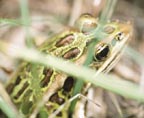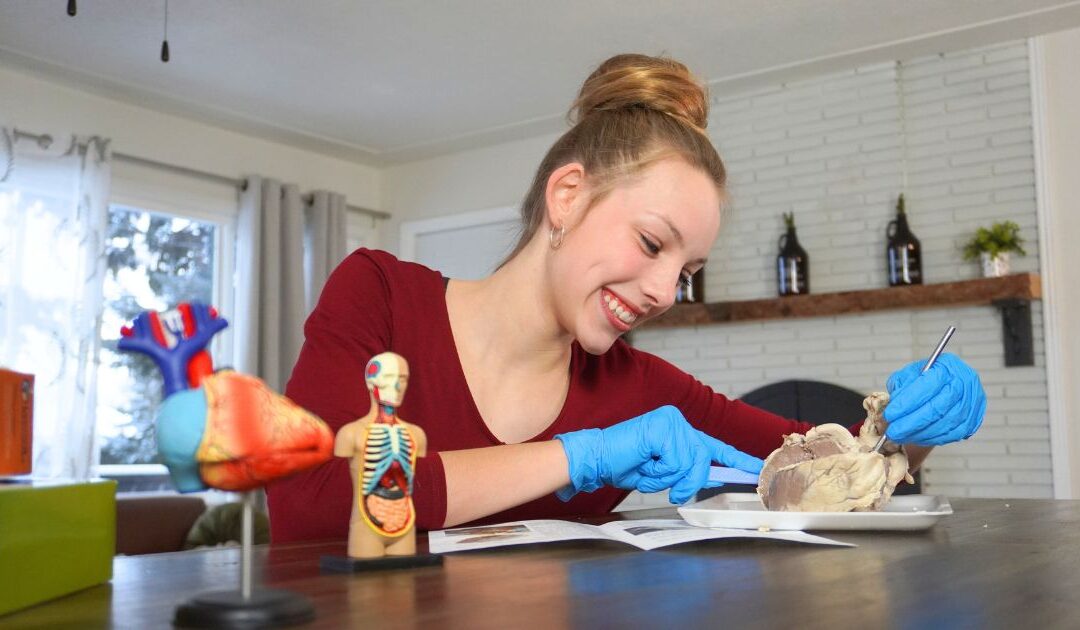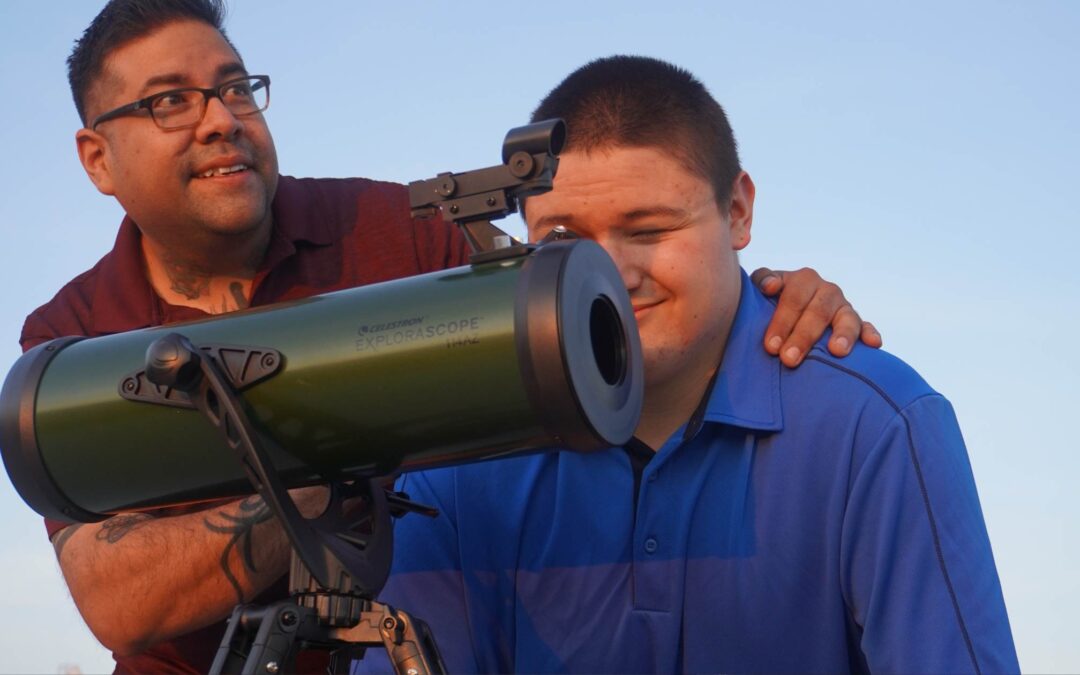Pond Science Lesson

The Life Cycle of a Frog
 Frogs are amphibians, which means that they can live in water or on land. They go through several stages of life before they become frogs and during those stages, they live only in water. The set of changes that frogs go through is called metamorphosis. Once they completely metamorphose into frogs, they live mostly on dry land, but they need a lot of moisture to keep their skin from drying out, so they go in the water a lot too.
Frogs are amphibians, which means that they can live in water or on land. They go through several stages of life before they become frogs and during those stages, they live only in water. The set of changes that frogs go through is called metamorphosis. Once they completely metamorphose into frogs, they live mostly on dry land, but they need a lot of moisture to keep their skin from drying out, so they go in the water a lot too.
Stage 1: Egg
A frog begins life as a fertilized egg. A female frog lays a lot of eggs at one time in a pond. The eggs are in a string or mass that sticks to plants in the water. The outer layer of a fertilized egg is a jelly-like material that forms a protective coating for the egg. The egg starts out as just one small cell, but it divides again and again very quickly to make more cells that become the organs of a baby frog (called an embryo). Within 2 to 25 days, depending on the temperature of the water and the type of frog, the egg hatches into a tadpole!
Stage 2: Tadpole
When the tadpole hatches, it looks more like a fish than a frog. It doesn’t have any legs! It has gills that allow it to breathe underwater. Its tail grows longer and a fin forms to help it swim. The tadpole swims, eats plants and algae from the water, and grows for several weeks. During this time, the tadpole starts to develop lungs so it will be able to breathe out of the water when it becomes a frog. The tadpole also starts to grow two hind legs. Now it can leap around instead of only swimming. Now the tadpole is starting to look a little more like a frog, but it still has a very long tail!
Stage 3: Young Frog
The tadpole starts to grow two front legs and its long tail becomes shorter and shorter. The tadpole uses the nutrients stored in its tail as food, so until its tail is completely gone, it doesn’t need anything else to eat! Then just a little stub of its tail is left, and the tadpole is a young frog. It hops right out of the water and onto dry land for the first time! The frog is still very small.
Stage 4: Adult Frog
The frog’s tail will eventually disappear completely and it will start to eat insects instead of plants from the water. The young frog will grow for about 2-4 years to become an adult. The adult frogs then lay their eggs and more tadpoles hatch and begin the cycle again!
If you live close to a pond, consider going to look for tadpoles and keeping one for a few days observe it. You might not see many changes happening, but you will probably notice that your little tadpole likes to eat (feed it tadpole food). Some types of tadpoles can take up to one year to change into frogs, and since you won’t know when your tadpole hatched from its egg, it will be hard to know how close it is to becoming a frog. You might only be able to see its tail grow and watch it breathe through its gills and swim with its fin.
Please note that tadpoles from the wild are very difficult to raise. They need lots of attention and special care. Before taking a tadpole home, explain to children that a pond is the best place for a tadpole, so you must let it back into its real home after a few days, even if you don’t get to see it grow legs or turn into a frog. The tadpole will be much happier in the pond with its brothers and sisters where it can grow up into a frog in its natural home where it has everything it needs to survive and grow. A pond is a natural habitat that provides everything the tadpole needs to grow and is a safe place for them to grow up. They can hide in the plants in the pond and they have plenty of food to eat and oxygen to breathe. To raise a tadpole into an adult frog, we recommend buying a kit, like the Grow-A-Frog kit. You will get everything you need, including a tadpole, tank, food, and instructions.
Pond Study
What is a pond? It is a body of water that is not connected to flowing water, like a stream or a river. Most ponds are much smaller than lakes and are not as deep. They are usually shallow enough that you can see the bottom – but sometimes the water is too dark to see into! The bottom of ponds are usually made of mud and a few rocks. Most ponds are formed naturally, but there are also a lot of beautiful ponds that have been made by humans in gardens and yards.
A pond is a habitat, or home, for many different kinds of animals and plants. A habitat must provide food, water, shelter, and space for the animals that live in it. For example, a pond is a good habitat for a tadpole: it has algae to eat (food), the water is just the right temperature and it provides plenty of oxygen for the tadpole to breathe (water), it can hide in the plants (shelter), and it has lots of room to swim around and grow (space).
Have you ever visited a pond? Do you remember anything special that you saw there? You probably saw lots of different types of life at the pond! Just like the seashore, lake, and other bodies of water, ponds have lots of plants and animals living in and around them – from insects and frogs to birds and lily pads. To learn more about animal homes, check out this science lesson.
Fun Facts
The water scavenger beetle is also called the great diving beetle, because it will dive into the mud at the bottom of a pond for protection from being eaten by fish or other pond animals!
Snails help keep ponds clean by eating algae that grows on plants and rocks in the water.
Dragonflies are nice to have around because they like to eat mosquitoes, gnats, flies, and other pesky insects. They like ponds because they can find plenty of those insects to eat near a pond.
Silly Science
What is the fly’s favorite dance? The jitter-bug!
How do you communicate with a fish? Drop a line!
What do you get when you cross a stream and a pond? Wet!
Printable Worksheet
Plan a trip to a pond and use this worksheet with the science project ‘Be a Pond Explorer’ to help kids sharpen their observation skills while learning more about the habitat of a pond and the plants and animals that live there.






